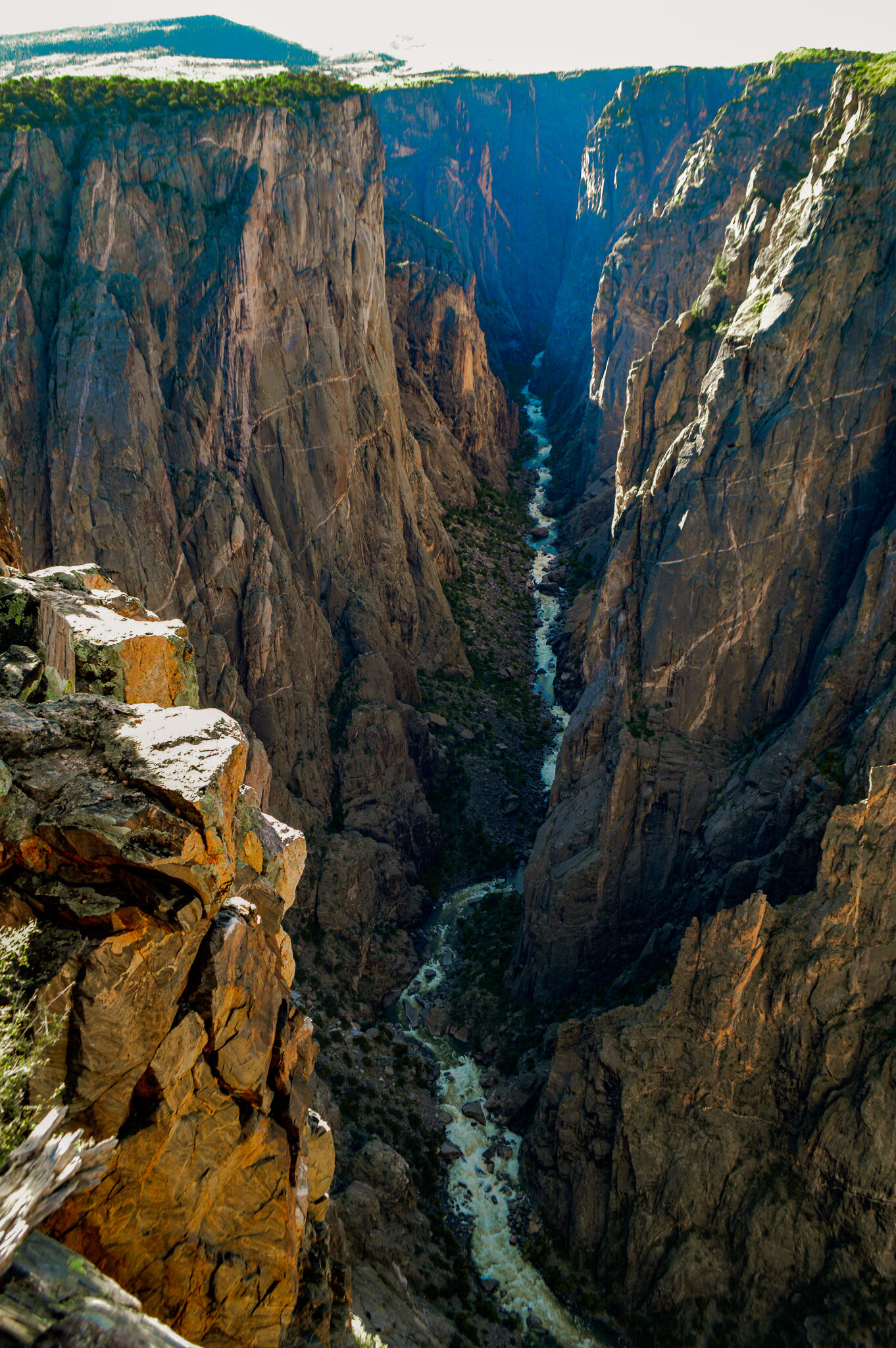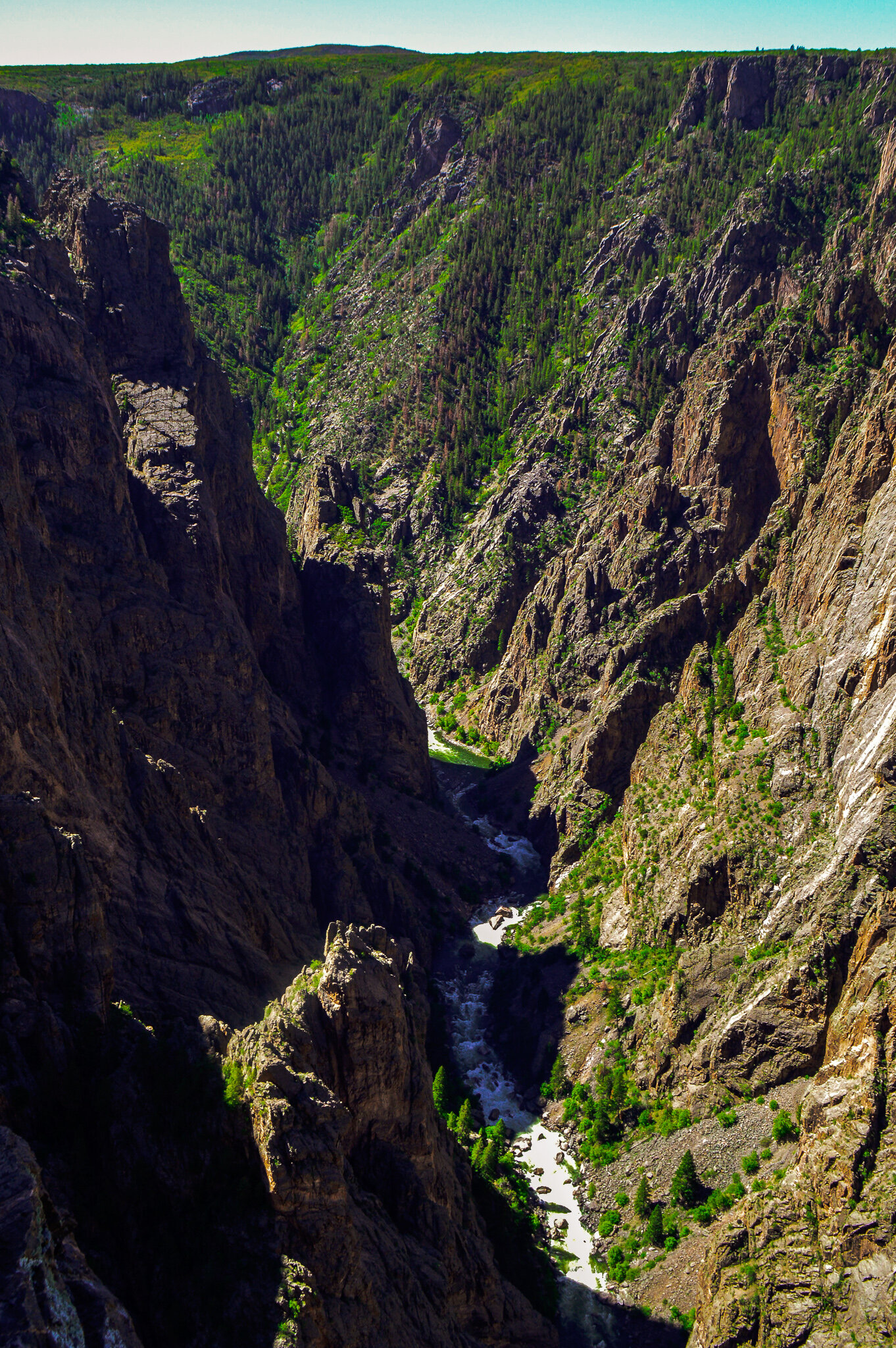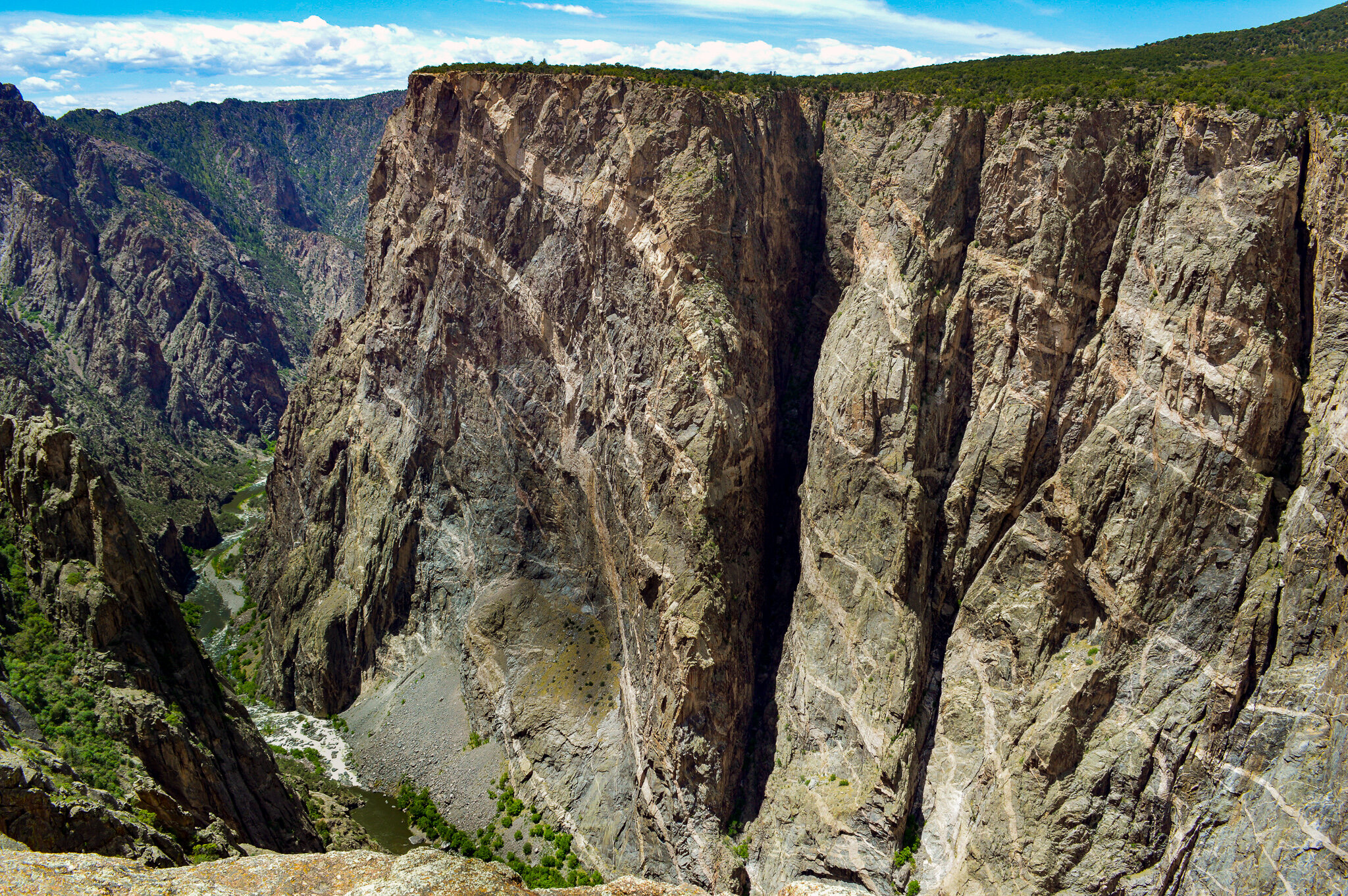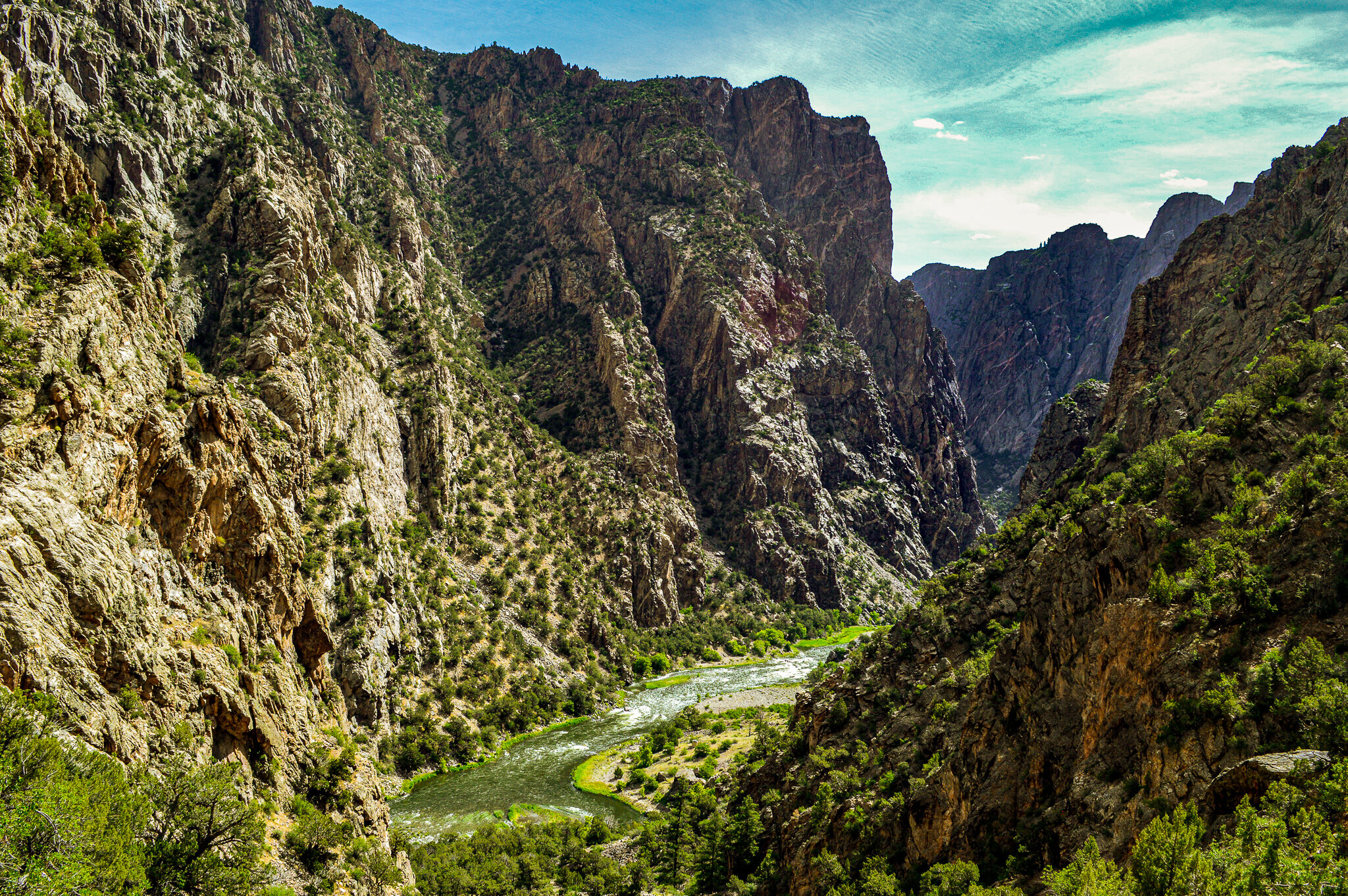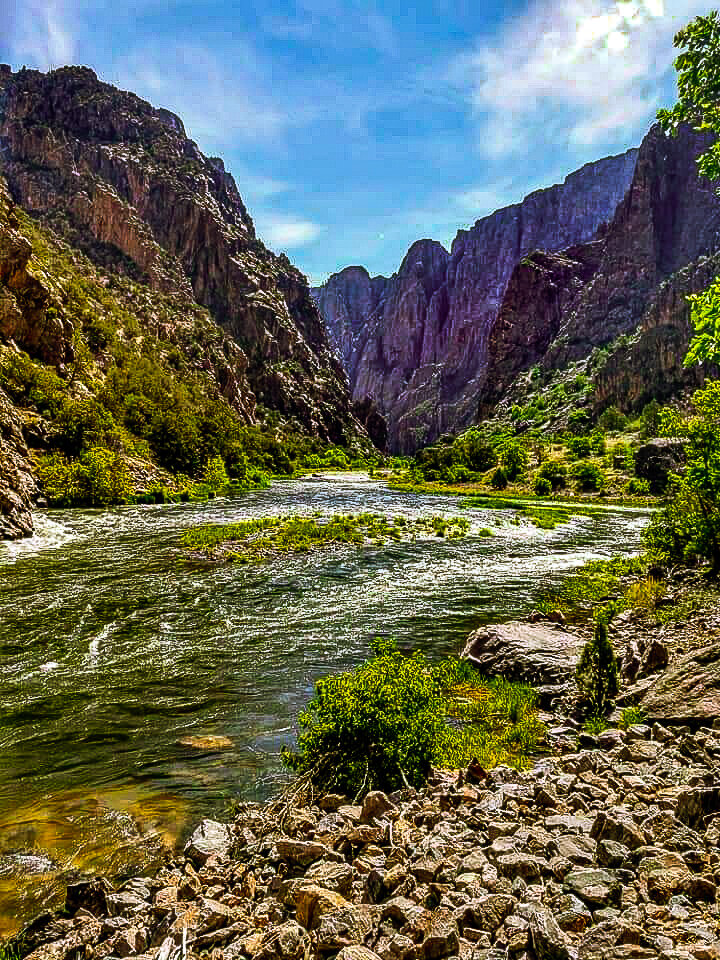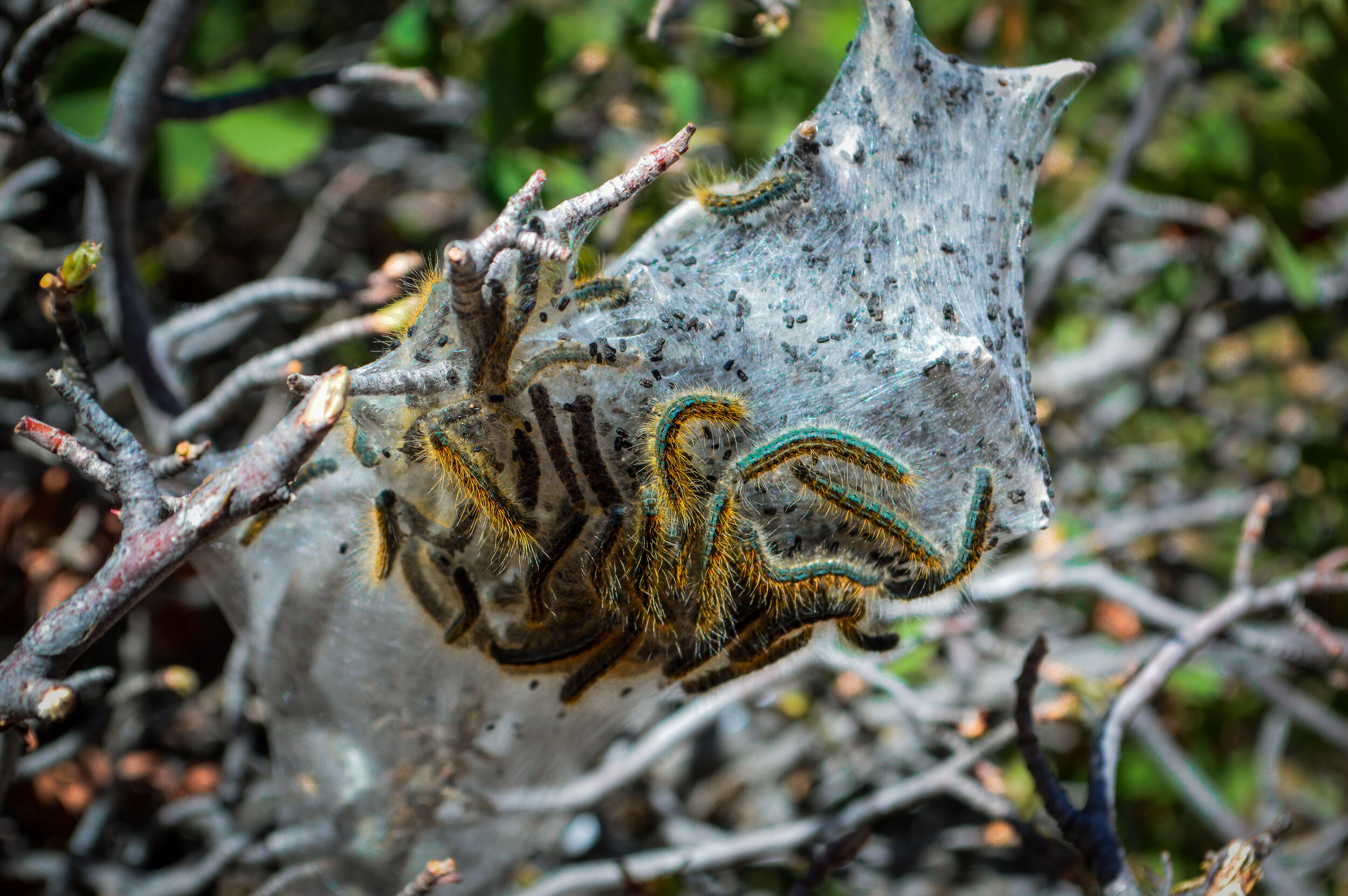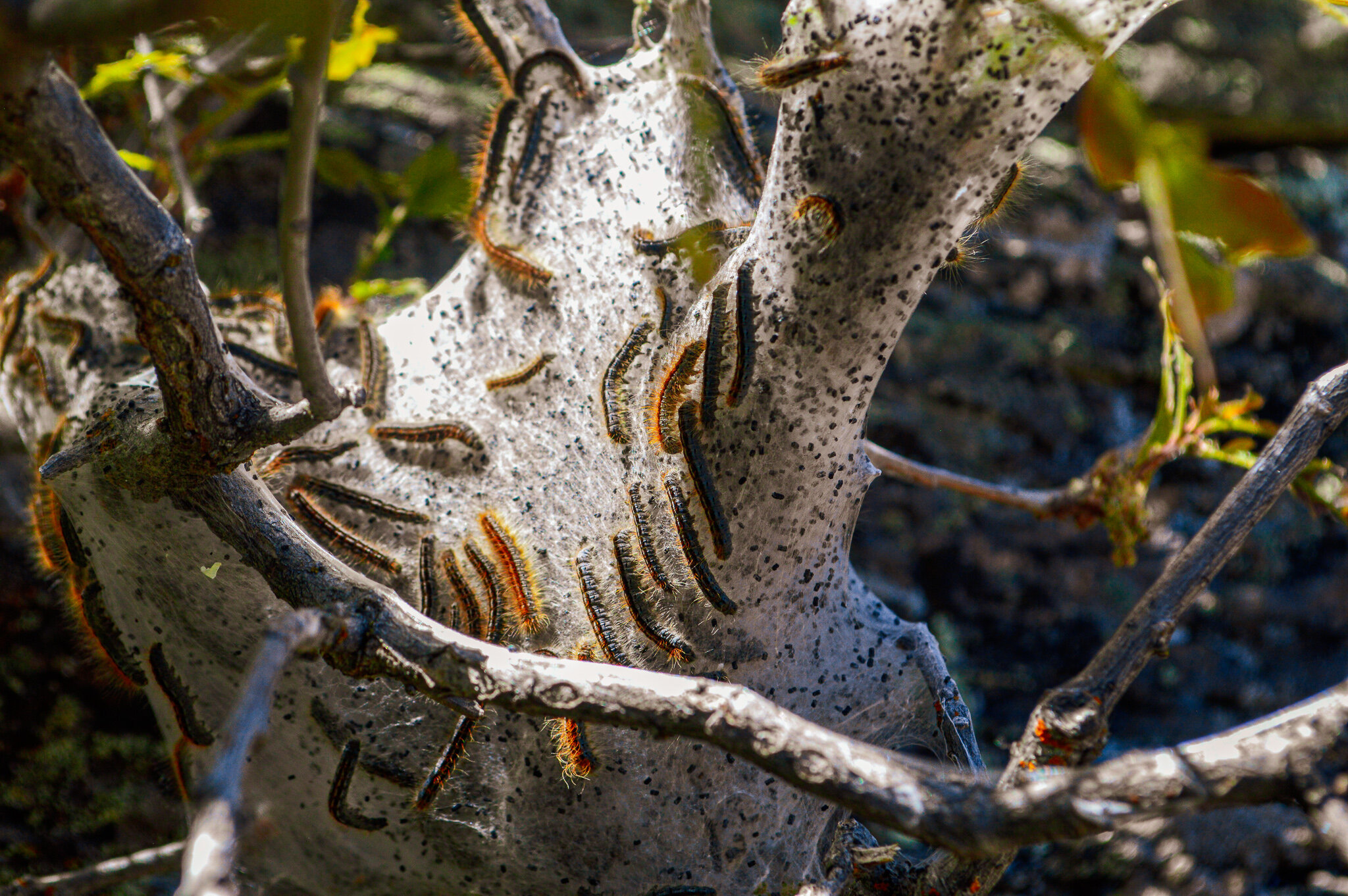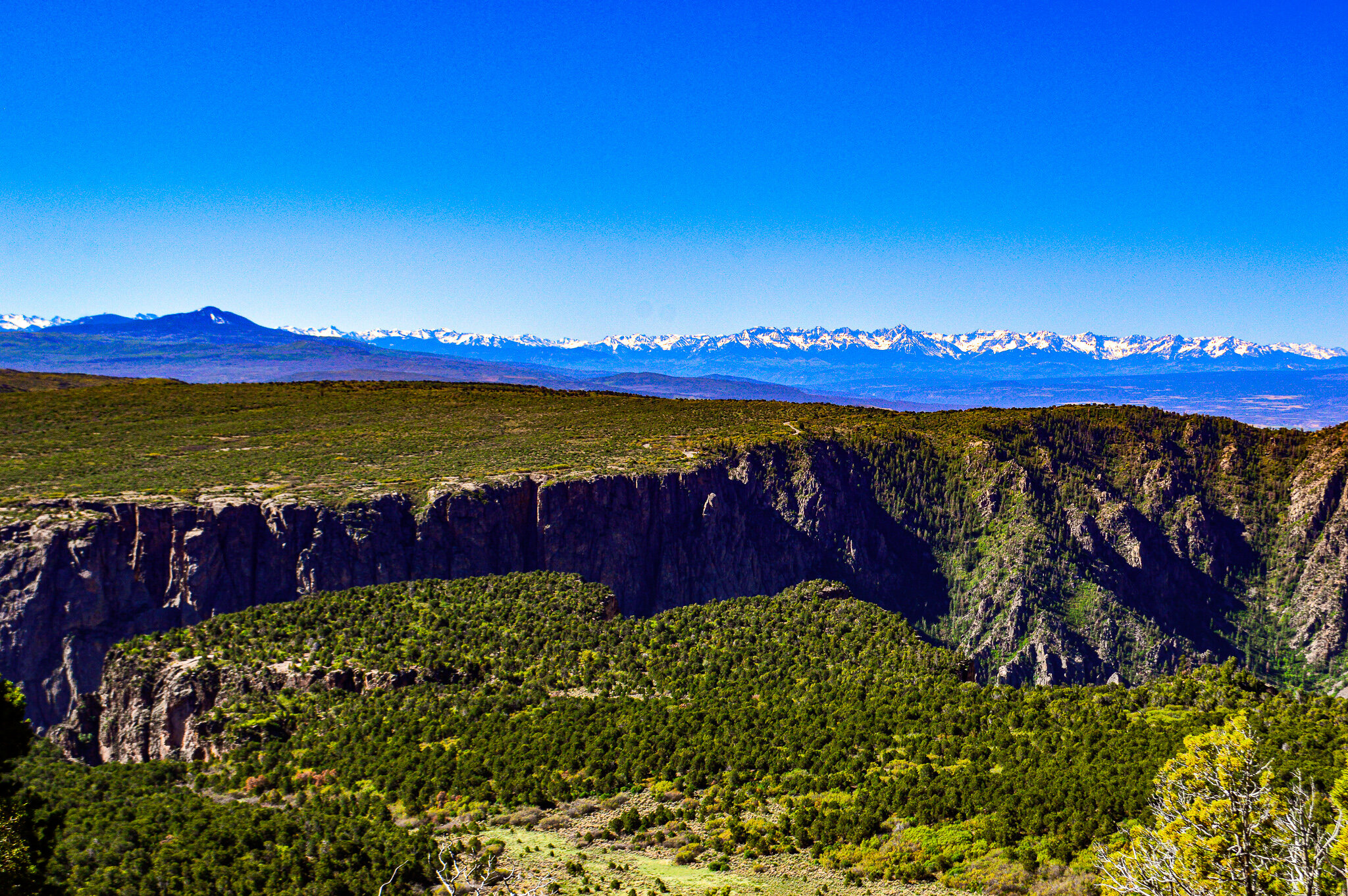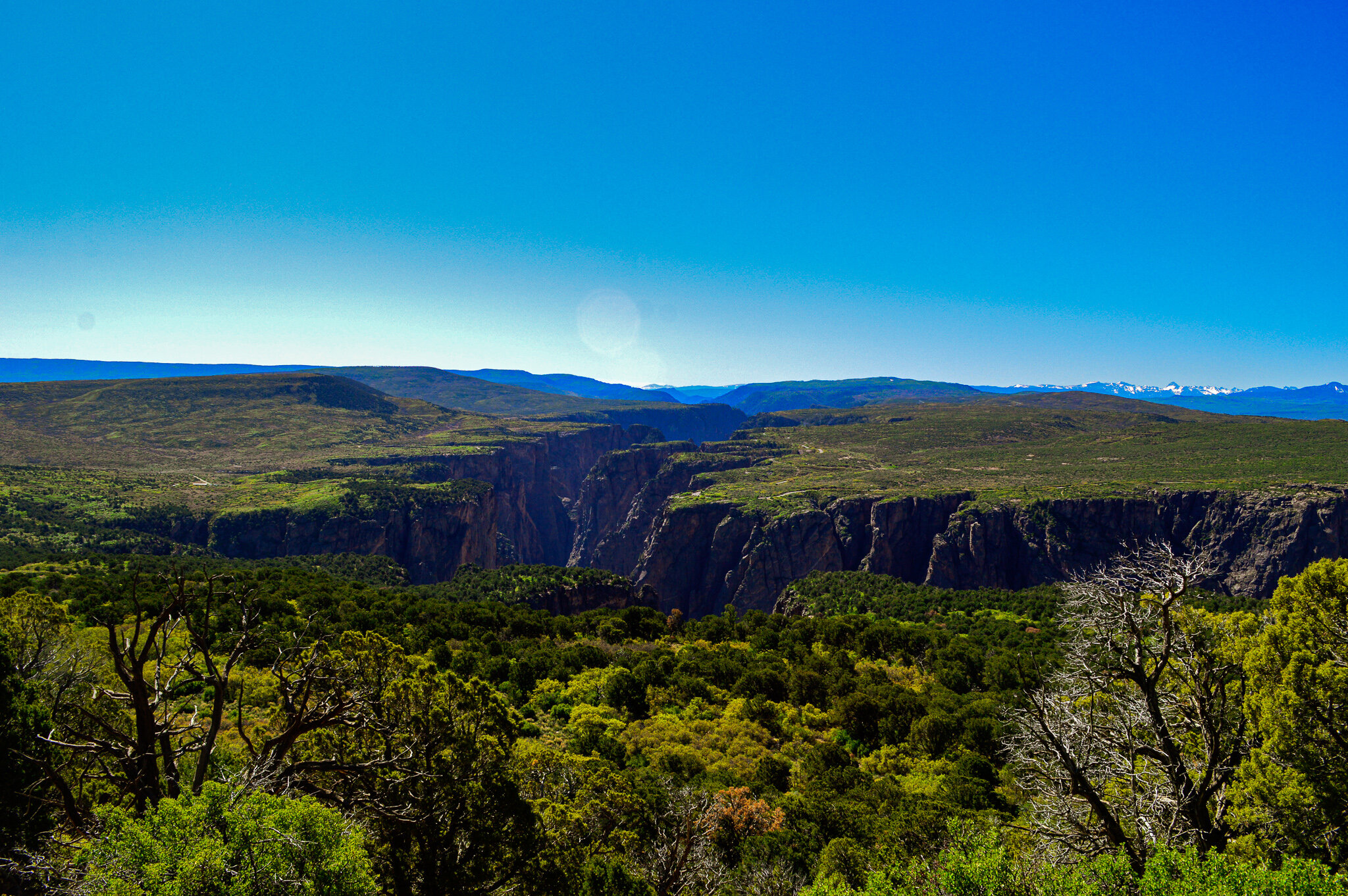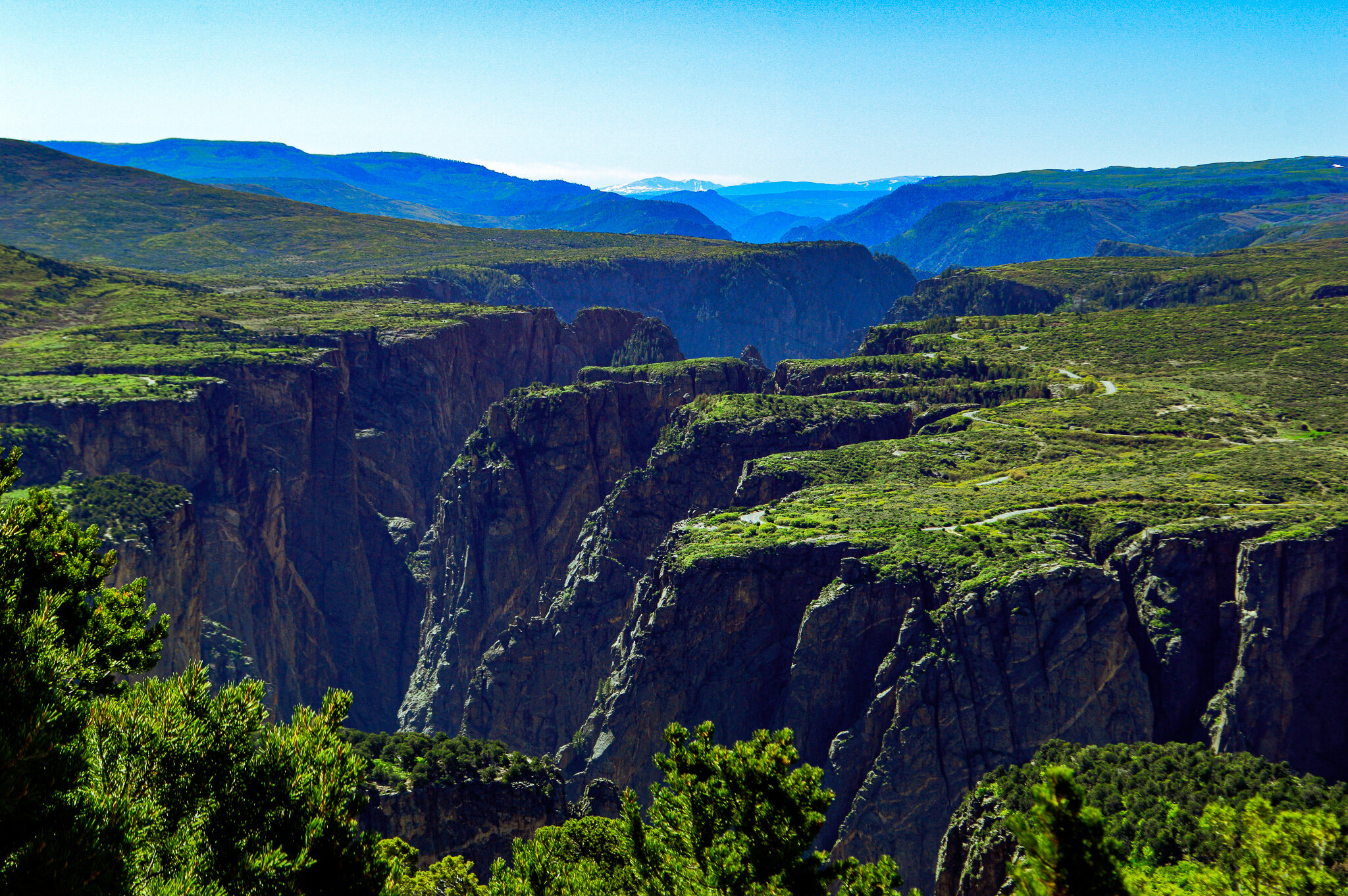Black Canyon of the Gunnison

While we consider Colorado to be our home (we were born and raised along the front range), the only national park within the state that had been a regular part of our lives before the start of this trip was Rocky Mountain NP. As we made our plans to lay low over the summer and wait out COVID, the opportunities to visit some of the lesser known national parks in CO were suddenly a lot more realistic. The original travel route we had planned essentially avoided the parks in CO because we knew we would be returning at some point – whether to visit family, or potentially find a place to settle down, we knew CO would always be in our lives. Now that we found ourselves unexpectedly in CO for the next few months, we were excited at the opportunity to continue our mission to see all of the national parks; even if those parks were not on our original planned route.
Black Canyon of the Gunnison NP is only 12 miles east of Montrose – a city that we had already visited several times via scenic drives (see previous posts). With the drive time being under an hour to reach the park boundaries, we were able to take several day trips out to see the canyon, both with the kids and as solo hikes. This NP is also one of the least visited parks in the US, so naturally it was one of the first to open back up after the initial COVID shutdown and had little to no visitors each time we came to explore.
Sixty million years ago, the Black Canyon region was a volcanic field. As this period of uplift started to simmer down, the Gunnison river followed a fold in the Earth’s crust, and the weight of the water slowly cut through rock (as it so often does!). Eventually, the river exposed a serpentine crack bending its way into the Earth – so deep in fact that to this day, the narrowest stretches receive little more than half an hour of sunlight a day. At its deepest, Warner Point, the canyon drops 2,722 ft; at the Narrows along the river, the canyon is only 40 ft wide. With the highest cliff in CO, and some of the steepest, oldest, and craggiest spires in North America, this canyon is completely unassuming until you are looking down the gorge at rock that dates back 1.7 billion years ago.
The “blackness” of the canyon repelled many of the ancient peoples – the Utes who lived on the rim never went in deeper for fear of losing their lives to Echo (an evil spirit whose voice bounces off canyon walls) or being captured by sinister “water babies” who lurk near deep canyon rivers attempting to seduce an unsuspecting person or drown a helpless child. Indeed, while looking into the abyss from one of the many scenic overlooks, the canyon is unlike any we have ever experienced before. There is a throbbing of sorts from the water below that seems to draw you in towards the edge of the cliff; to my core it felt like some force was calling me over the edge. As Lindsey King, a three-time National Magazine Award Finalist, noted:
“Gravity’s pull seems more powerful standing along the rim of Colorado’s Black Canyon of the Gunnison. Maybe it’s the 2,000-plus feet of nothingness, tugging at you from below, that gives the gorge its irresistible magnetism. Or maybe it’s the faint sound of the river that compels you to lean ever farther over the edge. Either way, at 48 miles long, the serrated knife slice into the state’s Western Slope is so dramatic, so vertigo-inducing, so inconceivable in its sheerness that you want to take a step back, you want to look away—but you can’t.”
Fewer than one percent of the park's visitors venture into the canyon and down to the river. In 1853, Capt. John W. Gunnison attempted this decent, and noted it was “the roughest, most hilly and most cut up” topography he had ever seen. Knowing all of this, we couldn’t resist attempting the decent ourselves! While most visitors who decent to the gold medal waters and challenging rapids are expert anglers, rock climbers, or seasoned kayakers, we had no other reason to climb into the canyon than the challenge of the decent. And it WAS a challenge. We took the Warner Route, which is the longest trail into the canyon. We incorrectly assumed this would make the vertical drop a little less intense given the extra mileage to reach the bottom. Instead, we were met with the largest vertical drop – over 700 ft more than any other trail to the river (ha, you live and you learn right?). The trail was well defined, and luckily not many loose rocks, but the steepness and angle in which you descend required an intense focus on your feet placement and enough scrambling that we questioned if we were in fact descending from a 14er. On top of that, as you descend towards the water, the cliff walls become more and more narrow – it could have just been a feeling of claustrophobia, but it seemed like there was poor air circulation and simply not enough air to feel comfortable. The hot stale air and the vertigo conjuring trail left us totally out of sorts, especially on the way back up. Once at the bottom, there was surprisingly more water than we expected, creating an almost deafening roar thru the canyon. Unlike the Grand Canyon whose walls are miles from each other and filled with a silty steady flow of water, Black Canyon of the Gunnison feels akin to a slot canyon with greenish-blue water that rapidly cuts and curves thru the canyon like a snake. Looking up into the vast white-banded granitic dikes that seem to flow thru the black gneiss, it’s easy to see why this canyon is world-renowned among climbers. The crystal-clear water and natural pools for fish to hide in had us wishing we brought our collapsible fishing gear!
Most visitors stick to the trails along the rim, which is exactly what we did with the kids. There are several short nature trails along both the North and South rims that offer excellent information on the local flora via guideposts and trail guides from the visitor center. While we had become quite familiar with sagebrush, Utah juniper, and pinyon pines, it was interesting to rest under the shade of mountain mahogany (shrubby, slow-growing tree that interestingly belongs in the rose family) and serviceberry trees (closely related to apple trees – we thought they were crabapple trees!). Warner Point Natural Trail was a particular favorite, with views of the San Juan Range and Uncompahgre Valley to the south, the West Elk Mountains to the north, and several views of the Gunnison River and sheer walls of the canyon.
For those looking to explore below the rim without taking on the challenge of hiking to the river, the Oak Flat Loop was another great family hike. The kids particularly enjoyed this hike as it had several steep slopes (anytime the kids can use hands and knees is a win for them!) and some particularly weird wildlife – web worms! If any of you have seen these before, you will understand why the kids thought they were awesome. These worms form large silk nests at the tips of tree branches, and wiggle vigorously at periodic intervals....in synchronicity. Just let that sink in – a web of worms, all squirming about in unison, located at the ends of shrubby trees that are the perfect height to smack you in the face if you are not looking in front of you (no, I don’t want to talk about it). The kids thought this was magical! While it is unknown how these worms synchronize their movements, some of the rangers thought the worms did this to keep the nest warm.
Another great way to get picturesque views of the canyon is to take the North Vista Trail up to the summit of Green Mountain. The trail crosses several viewpoints (including the aptly names Exclamation Point) and the summit offers unparalleled views into the canyon. Many of the visitors to this park simply take the scenic drive thru the park and view the canyon from the road; for those willing to make the 7-mile trek up to Green Mountain, you will be rewarded with a solo hike and the opportunity to see the canyon from above!
All in all, this unassuming national park felt like a true Colorado gem. While some visitors might complain there is not much to do, we can tell you that complainers need not visit; this canyon is not for the faint of heart or those looking for a casual stroll. And as many native Coloradans know, less is more, especially when it comes to people in our wild spaces.

